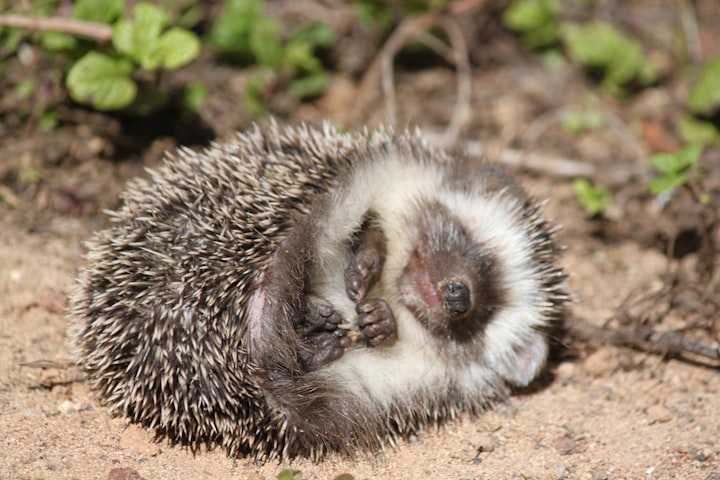Summer Porcupine
a tale of childhood roadkill

Car exhaust mingled with the scent of late summer on the side of the Wisconsin highway. Keeping to the shoulder, Luke walked slowly home after visiting a nearby flea market. Seeing a small lump where the gravel met tall grass, he investigated, finding a dead porcupine. To Luke, at age twelve, the departed creature wasn't just roadkill. It was treasure.
Porcupine quills were prized materials for Native crafts. They could be dyed bright colors and used for a special kind of traditional embroidery. At Luke's grandmother's craft store, the quills sold for seven dollars an ounce. Looking at the unlucky porcupine at his feet, Luke estimated it contained several ounces of usable quills.
Having previously brought roadkill home without warning, Luke left the porcupine cooking in the sun and proceeded home to inform his parents of his find. Predictably, his parents were disinterested and vaguely grossed out. Luke also invited his friend Chad over by telephone, hoping to share the ugly work ahead of him. While Chad bicycled over, Luke went to get the porcupine, wrapping it in a tattered tarp and dragging it home.
Once Chad arrived and hesitantly agreed to help Luke pluck and wash the quills, they prepared a big bucket of warm, soapy water and put on leather work gloves. Positioning themselves upwind of the carcass, they took turns pulling out the medium-sized quills and transferring these to the bucket. The porcupine's largest quills wouldn't come loose without a pliers. Its smallest, hair-like quills came out too easily, sticking to everything. But only the medium-sized quills were used for embroidery, so they focused on these.
Over the course of two hours, Luke and his friend removed all of the quills that they could. After soaking these in the soapy water, they spread the quills out on a tarp in the sun and rinsed them off with a garden hose. When the quills had dried sufficiently, they weighed them out into several one ounce bags. Luke brought these directly to his grandmother, who agreed to sell them alongside the other porcupine quills in her store.
Even though Luke gave Chad ten dollars, Chad was disgusted by the whole experience and told Luke not to call him about roadkill again. Later that summer, Luke found a deer whose life had been ended by the highway. It's meat had already gone foul, but Luke dragged it back home anyway and didn't mention it to his parents or call Chad to help him.
Once home, Luke took the deer's skin and stretched it tight between two trees. Then he scraped its flesh side clean with a bent butter knife, removed the hide from the trees, folded it up, soaked it with water, and put it in a plastic bag to rot the hair loose. Returning his attention to the carcass, Luke carefully removed the flat loin tendons from alongside the creature's spine, as well as the much shorter, round tendons from its lower legs. Cleaning these tendons carefully, he soaked them in water, then used a pair of rounded stones to pound them into fibers constituting prized traditional sewing sinew.
This sinew was naturally hard and had to be soaked in water for its threads to remain pliable. If the tip of a thread was kept dry, it served as a needle that easily passed through holes made by an awl. In truth, Luke preferred sewing with artificial sinew, made of nylon fibers and beeswax. But the natural sinew had been used for thousands of years and he liked having some on hand.
Eventually, Luke dragged what remained of the porcupine and the deer deep into the forest, where they'd be quickly consumed by other creatures. Later, he scraped the loosened hair off of the deerskin to make thin, serviceable rawhide. When Luke's parents moved from the country into town, he stopped bringing roadkill home. But every time he saw the remnants of some poor creature on the side of a highway, he secretly imagined all of its curiously useful parts.
About the Creator
Mark Bailey
I make art and write. Currently have five sci fi novels in print, as well as many articles about crypto and blockchain in popular media. I love coffee, painting, and exploring emerging technologies.






Comments
There are no comments for this story
Be the first to respond and start the conversation.